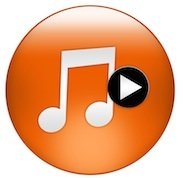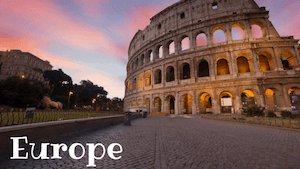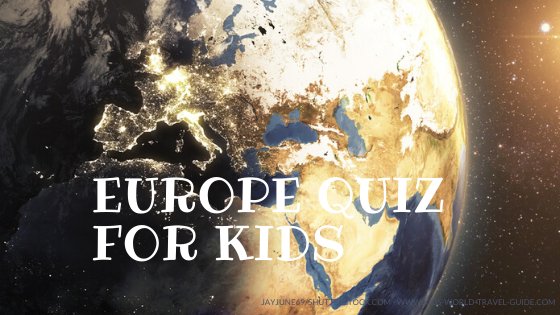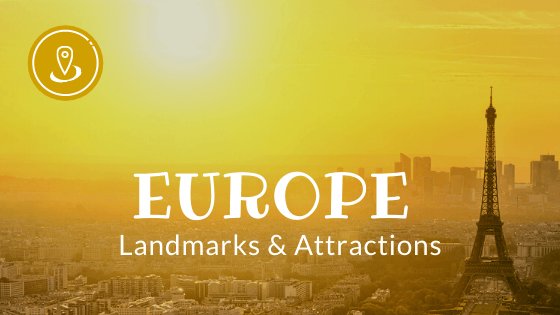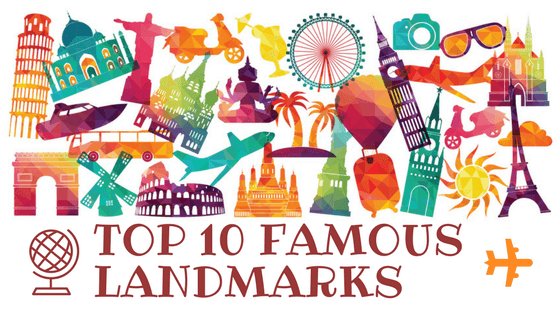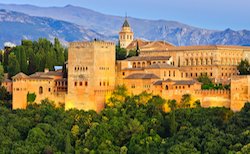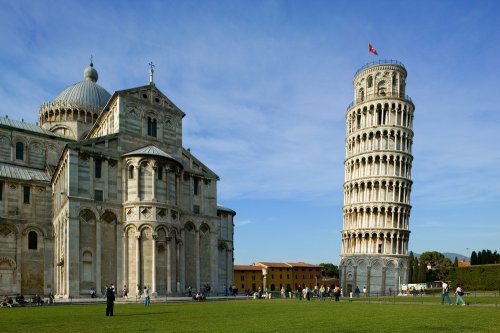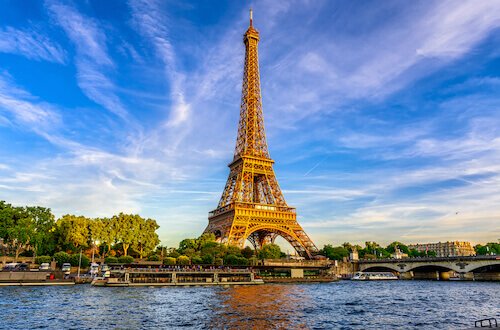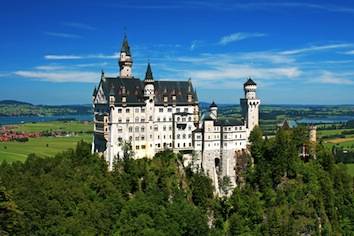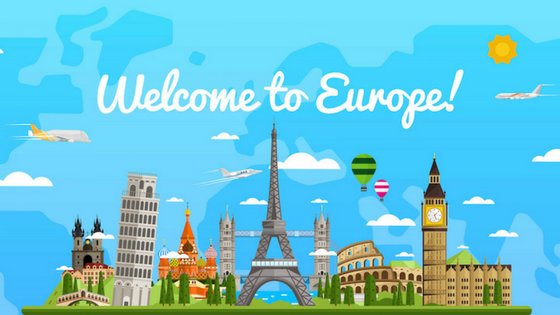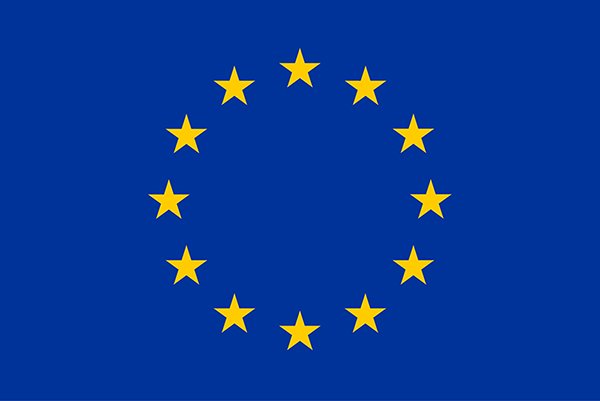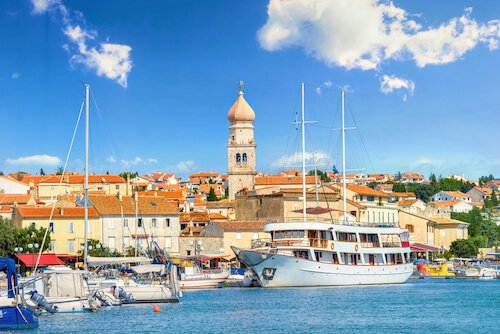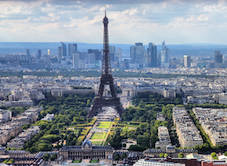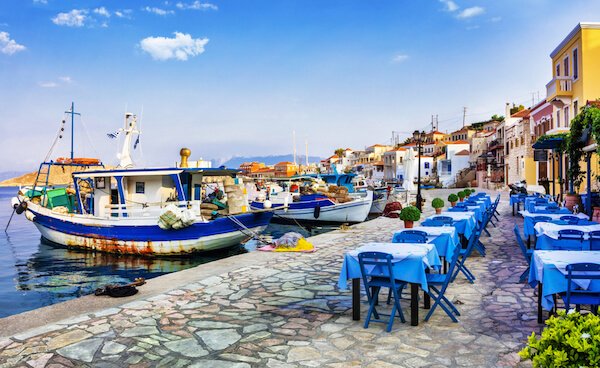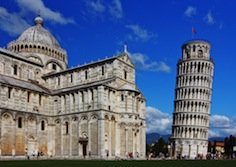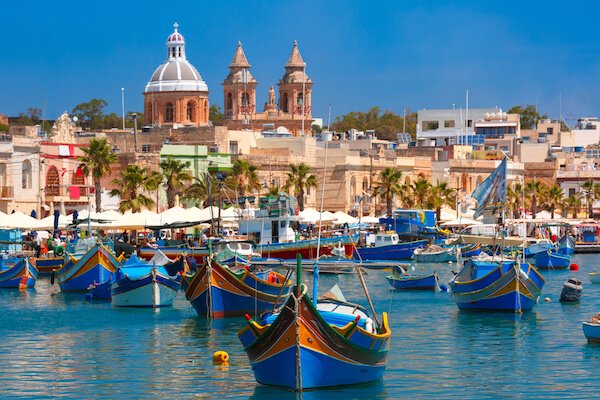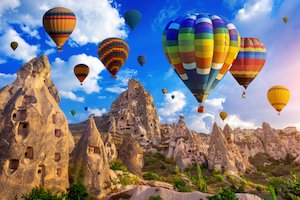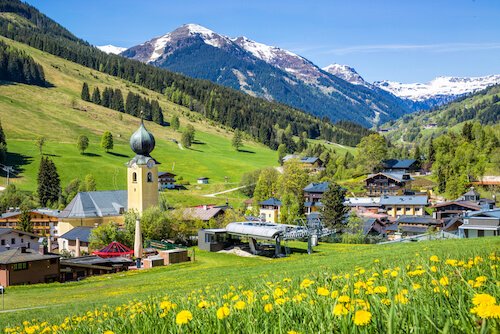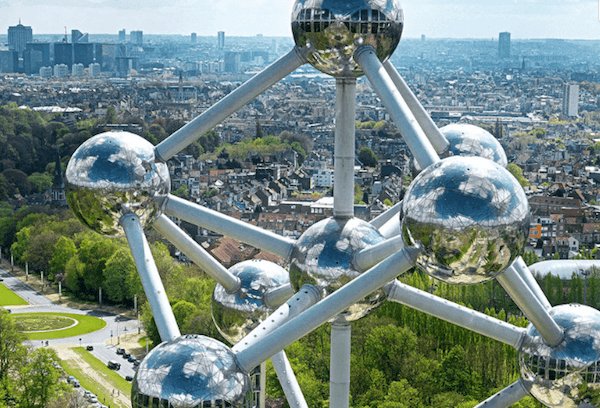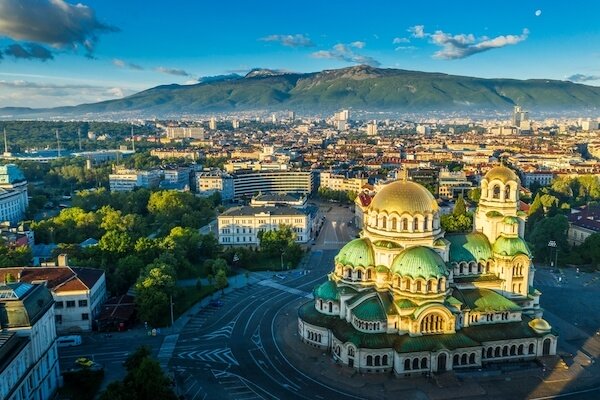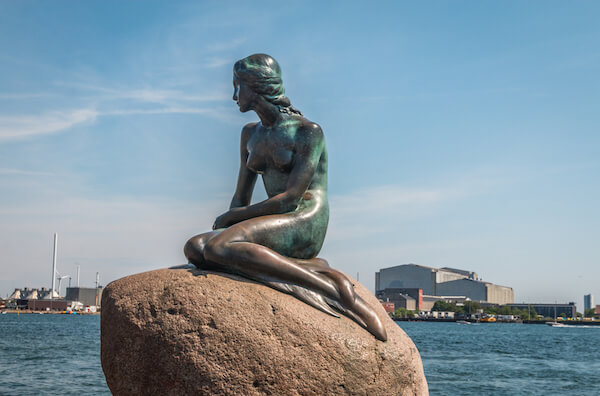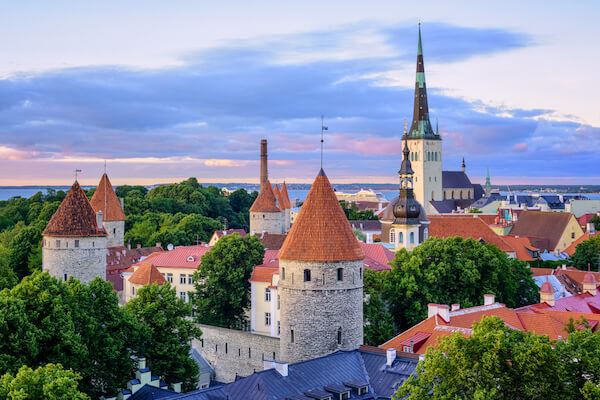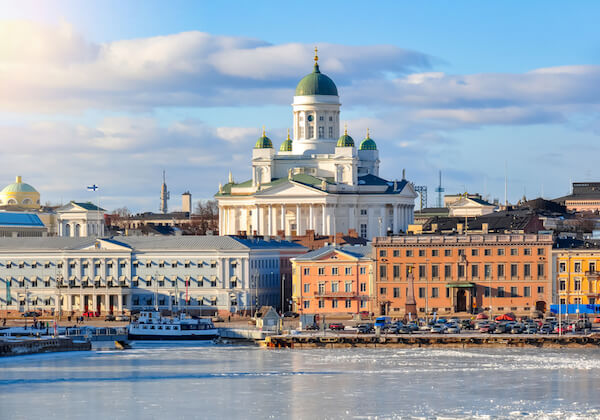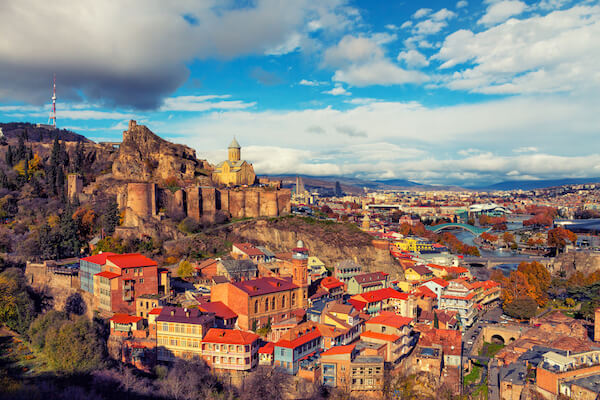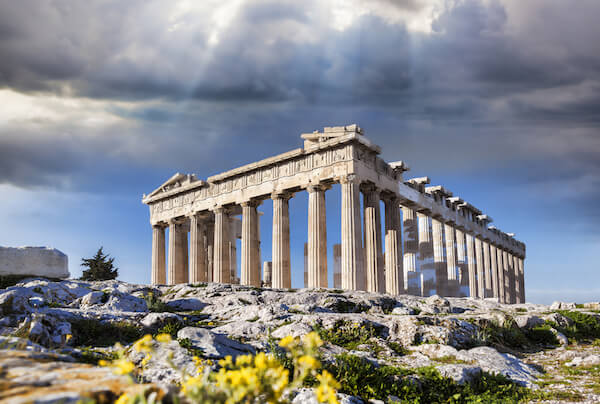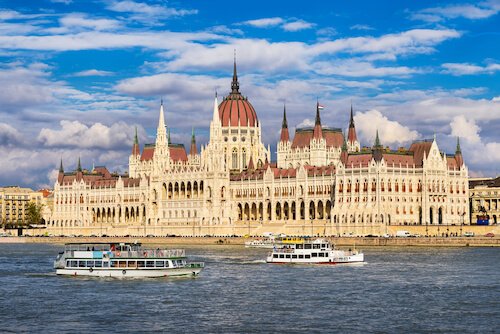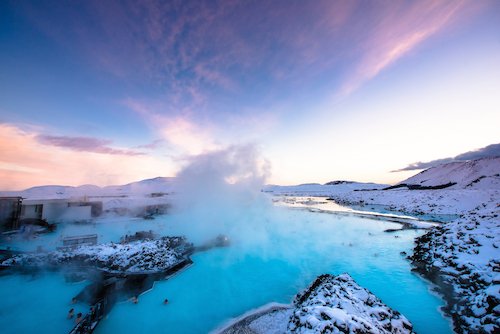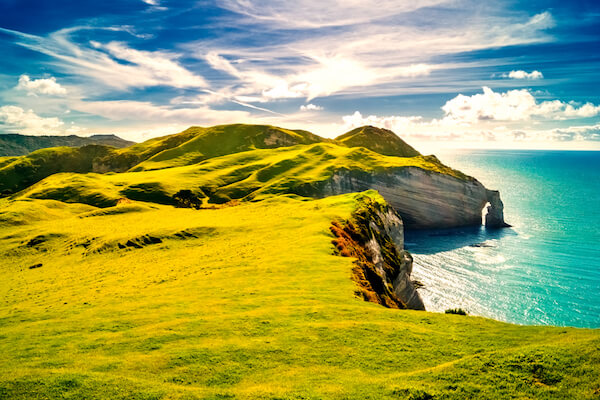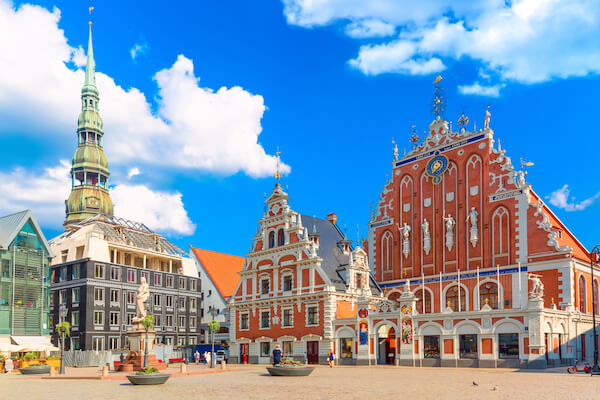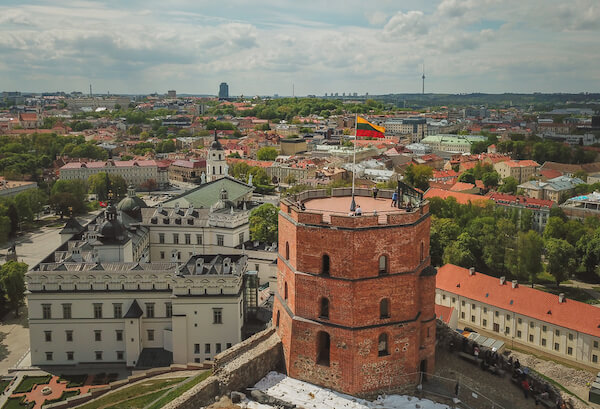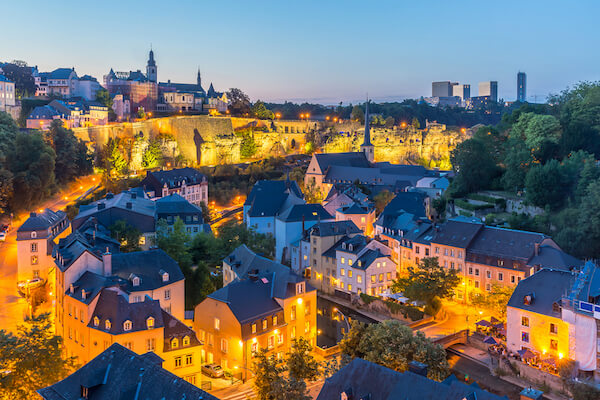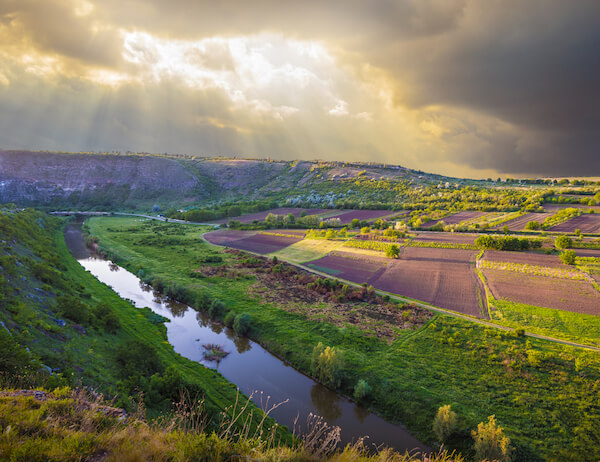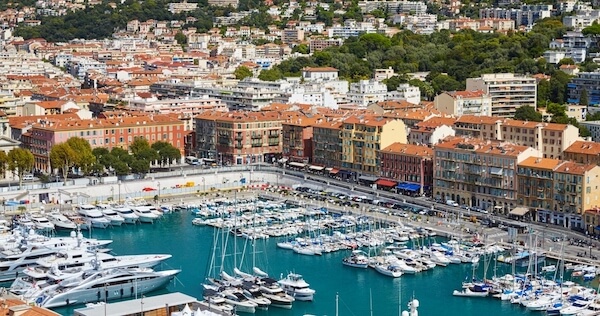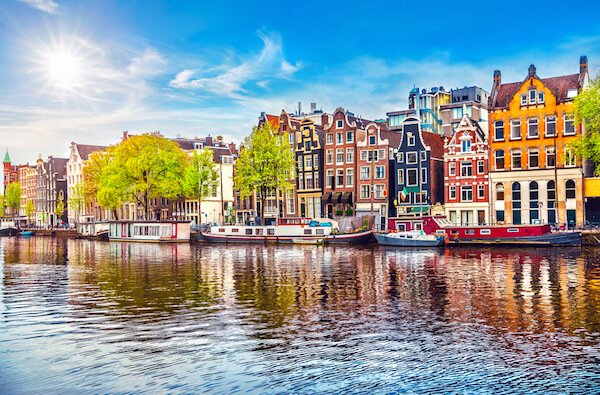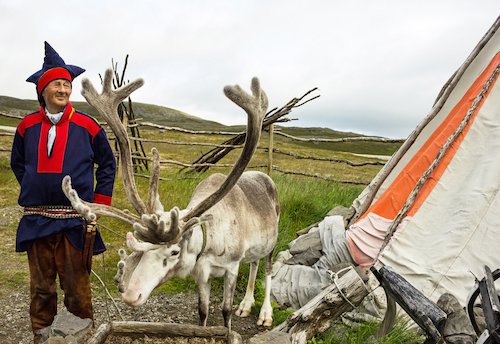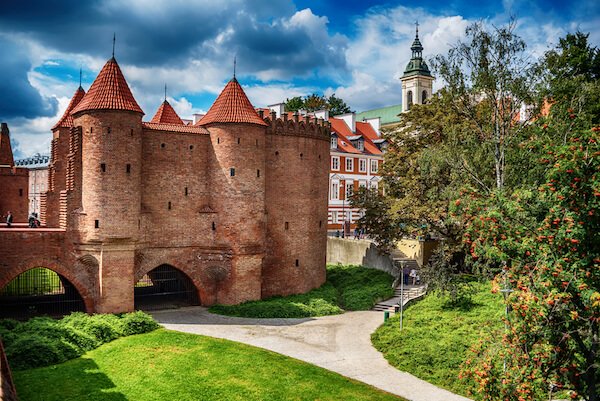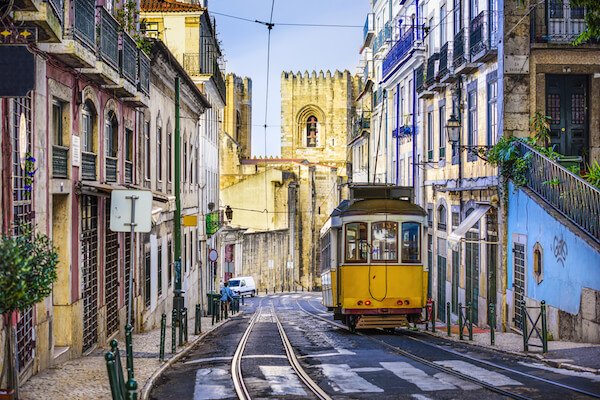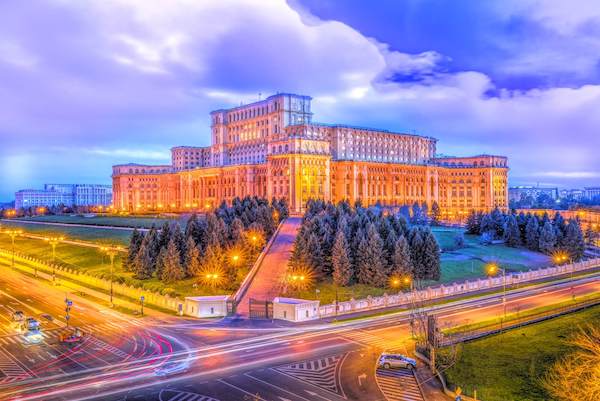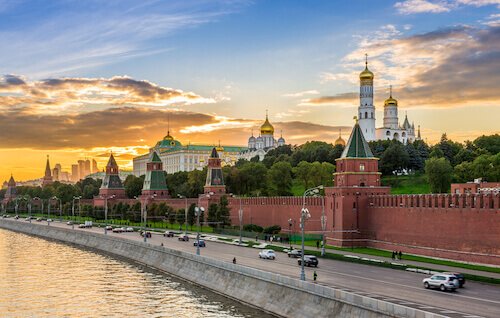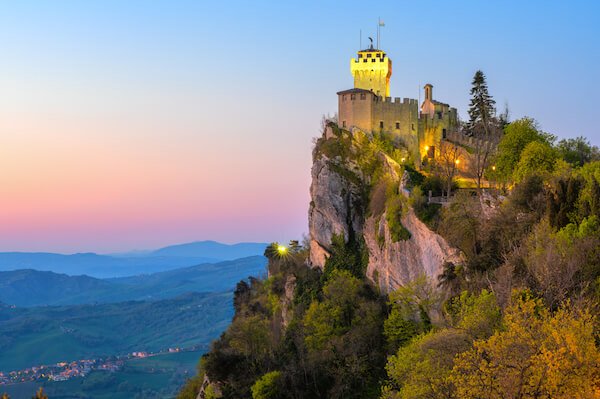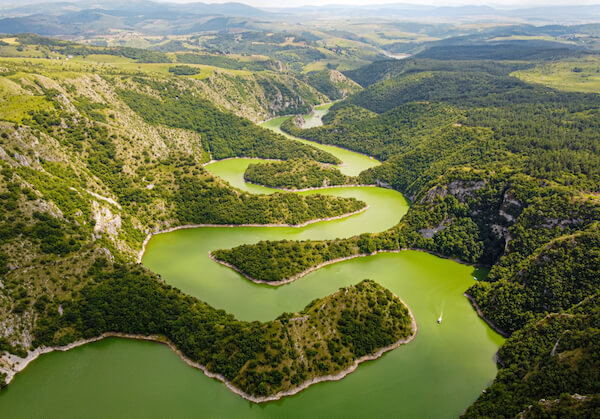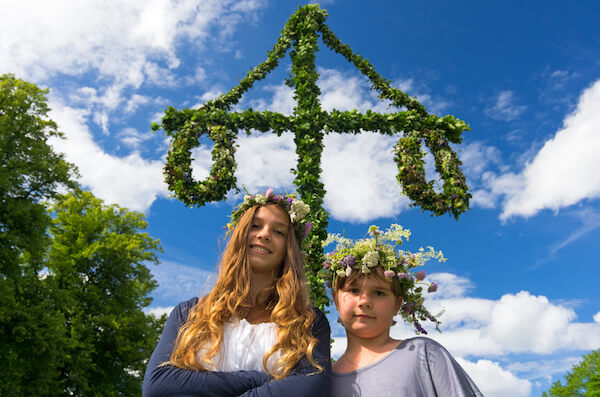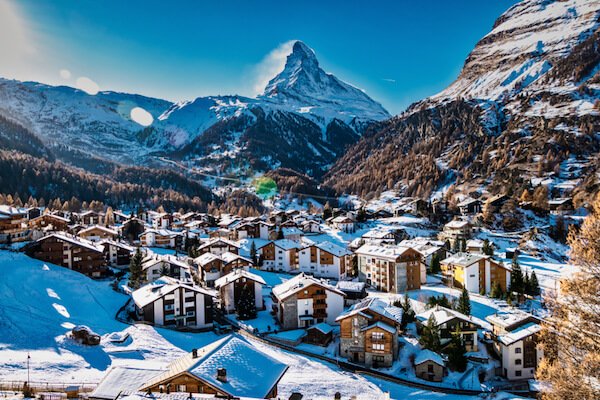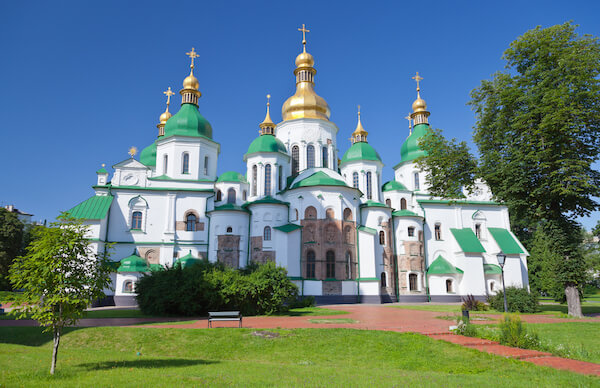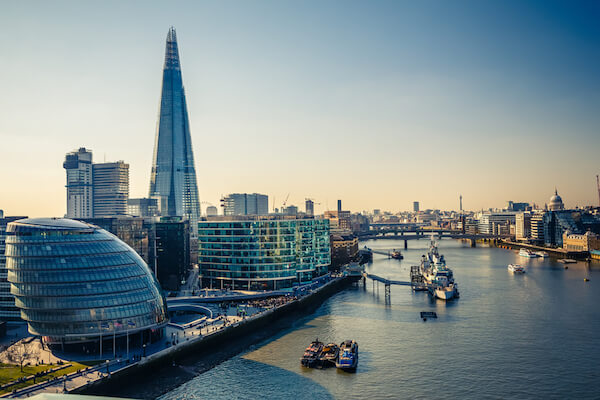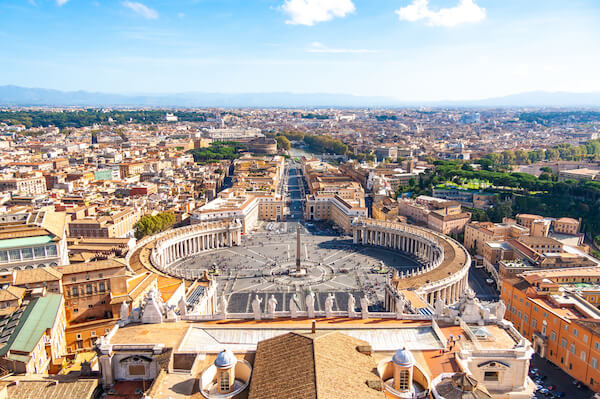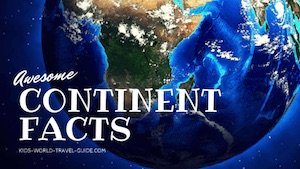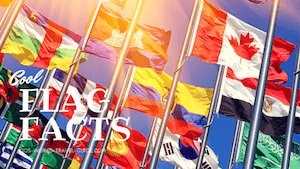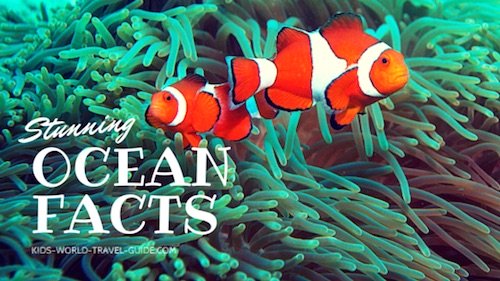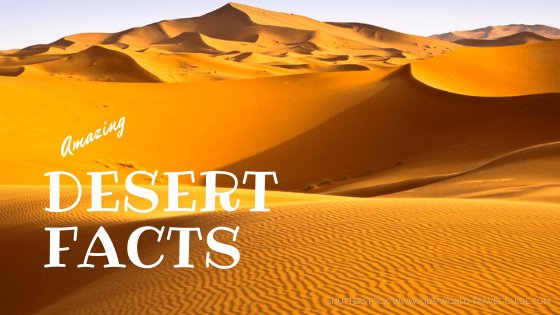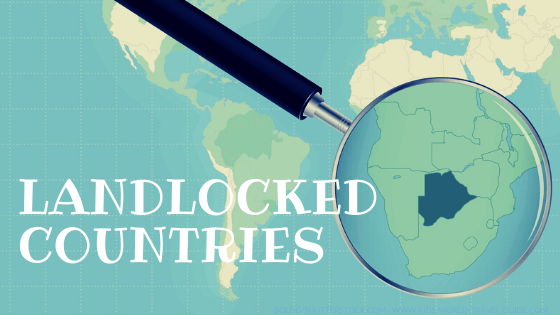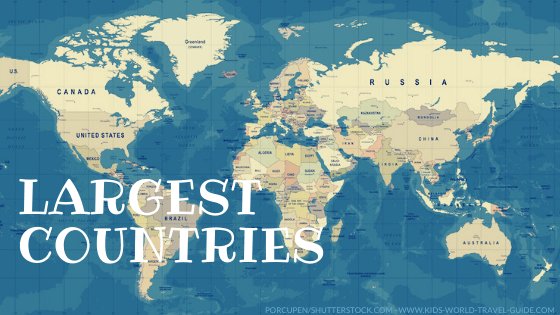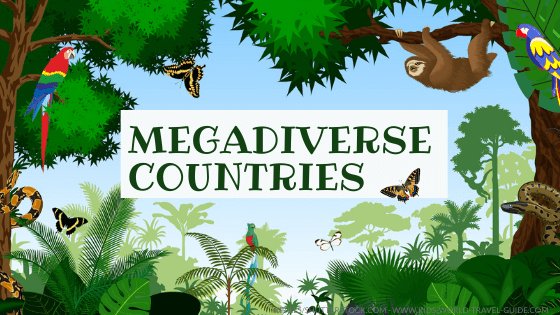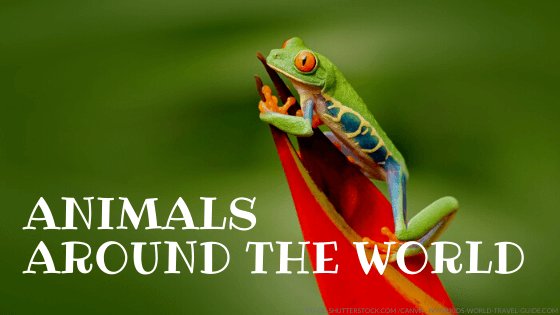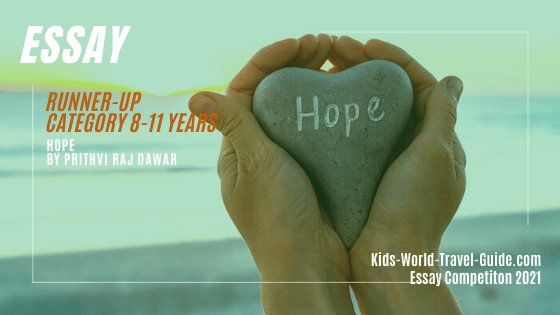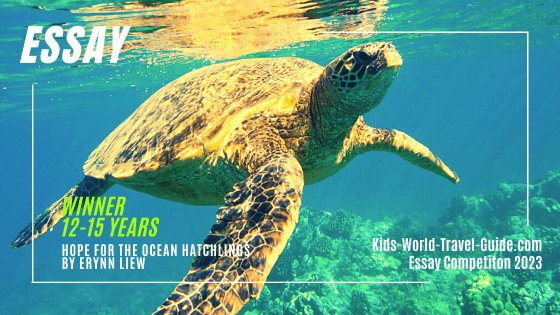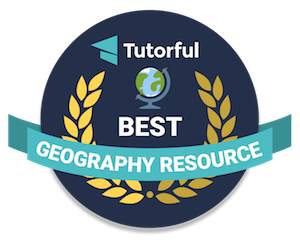Cyprus Facts for Kids
Our Cyprus Facts for Kids provide interesting and fun facts about the country in Southern Europe, the island's geography, landmarks, attractions and people and so much more.
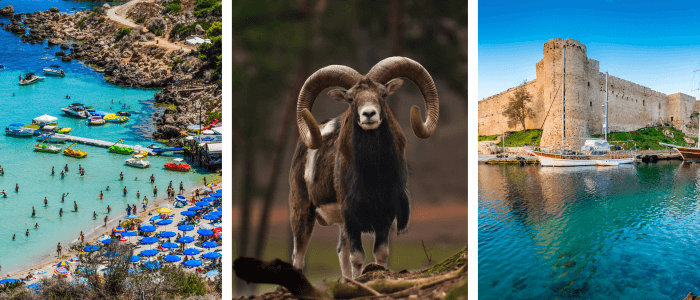 Cyprus Facts: beaches, mouflon, Kyrenia castle
Cyprus Facts: beaches, mouflon, Kyrenia castleCyprus Facts for Kids
Here are some interesting facts about Cyprus which were chosen and researched especially for kids.
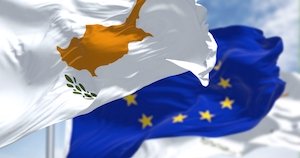 Cyprus Flag with EU flag
Cyprus Flag with EU flag- Continent: Europe
- Population: 1.4 million people live in Cyprus (2025)
- Capital: Nicosia (Lefkosia) with about 350,000 inhabitants
- Name: Republic of Cyprus
- Government: Presidential Republic
- Official Languages: Greek and Turkish
- Religion: Eastern Orthodox Christians about 70%
- Literacy: 99% of the population aged 15 and over can read and write
- Currency: 1 euro = 100 cents (before 2008: Cyprus pound)
- National Anthem: Hymn to Liberty (Greece and Cyprus have the same national anthem)
- National Holiday: 1 October (Independence Day)
- National Symbol: Olive branch, mouflon
- History: Cyprus gained independence from Britain in 1960
Cyprus Facts for Kids | Cyprus Geography
Cyprus is an island country in the Mediterranean Sea. The island is located to the south of Turkey/ Türkiye and to the east of Greece.
 Location of Cyprus in the Mediterranean
Location of Cyprus in the Mediterranean- Cyprus is a country in southeastern Europe, but strictly geographically speaking we would have to say Cyprus is located in Western Asia.
- The country is linked culturally as well as politically to the European countries. The Republic of Cyprus is part of the European Union since 2004.
- The island is a divided as the north eastern parts are governed by the Turkish as a self-declared republic of Northern Cyprus. In 1974, Turkish troops had invaded the island and support the Turkish minority group.
- The Republic of Cyprus houses about two thirds of the island's land area or the southern and central parts of the country. There is a UN buffer zone between both parts of the country.
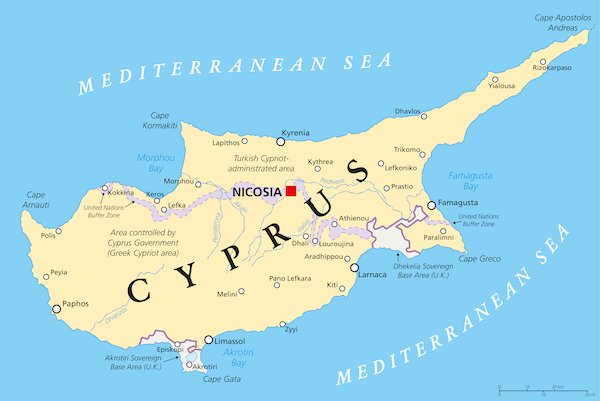 Map of Cyprus with buffer zone
Map of Cyprus with buffer zone- The division of the island of Cyprus is shown on the map above. The border between the Republic of Cyprus in the South and Northern Cyprus is manned by UN peacekeepers.
- The capital city Nicosia, or Lefkosia, is a divided city for more than 50 years and the last divided capital city in Europe.
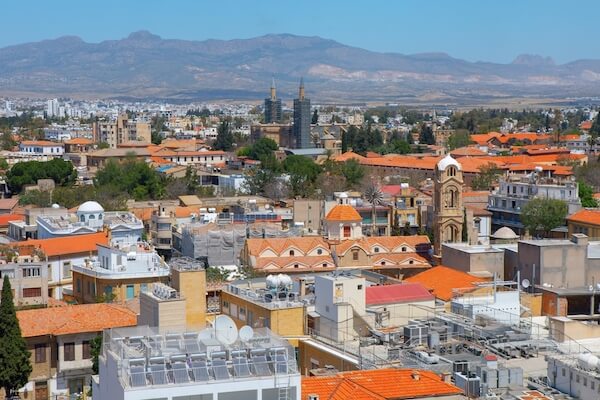 Nicosia also referred to as Lefkosia
Nicosia also referred to as Lefkosia- Cyprus has a mild and temperate climate with wetter and colder winters and hot and dry summers.
- Cyprus is slightly smaller in size than the U.S. island of Puerto Rico, or a bit less than three times the size of the state of Rhode Island/ USA, or about half the size of Fiji or Slovenia, or is about ten times smaller than Portugal.
Facts about Greece
Geo Superlatives
- Cyprus is the third largest island in the Mediterranean Sea - after the Italian islands of Sicily and Sardinia.
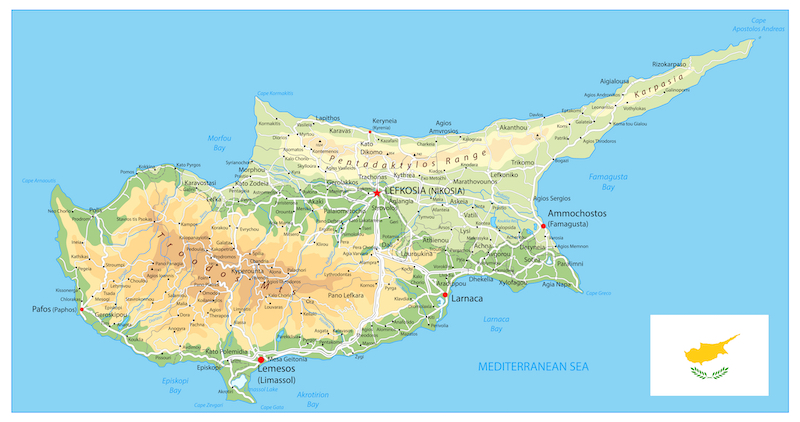 Physical Map of Cyprus
Physical Map of Cyprus- The longest river in Cyprus is the river Pedieos with about 100 km/ 60 miles but the river is not navigable.
- The island is mountainous with the highest mountains in the southwestern parts of the country. The largest mountain range are the Troodos mountains. The area here is known also for copper mining.
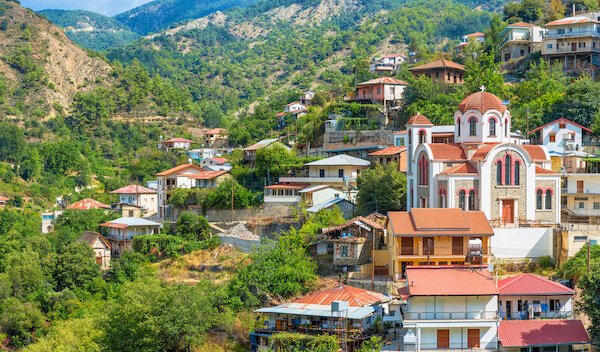 Montoullas village
Montoullas village- Cyprus' highest mountain is also called Mount Olympus or Mount Troodos. Maybe you remember Greece's highest mountain has the same name, but this one is much higher! The mountain peak of Cyprus' Mount Olympus/ Mount Troodos reaches 1,952 m/ 6,404 ft. Here you can come skiing in winter and there are even five ski lifts on this mountain!
- Akrotiri Salt Lake is the largest lake in Cyprus. It is located in the southwest of the island and also referred to as Limassol Salt Lake.
- Lefkosia (also referred to as Nicosia) is the largest city of the island and the capital city. Lefkosia is an ancient walled city which today is a modern city. This is also a divided city as North Nicosia is the largest settlement in the Turkish part of the island.
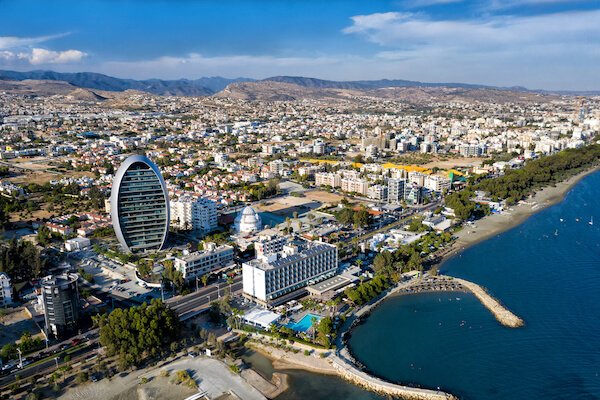 Limassol's Oval building is a major landmark of the city
Limassol's Oval building is a major landmark of the city- Limassol (referred to also as Lemesos), Larnaka and Pafos (Paphos) are the country's main cities. Limassol is known for the Medieval castle, the stunning beach promenade and the art trail and the fantastic Archeological museum.
- And there is Ayia Napia, a popular seaside resort in eastern Cyprus.
Cyprus Facts for Kids
Landmarks and Attractions
There are three UNESCO world heritage sites in Greece: the mosaics of Pafos/ Paphos, the prehistoric round houses in Choirokoitia near Larnaka and the painted churches of Troodos such as the Archangel Michael Church in Pedoulas.
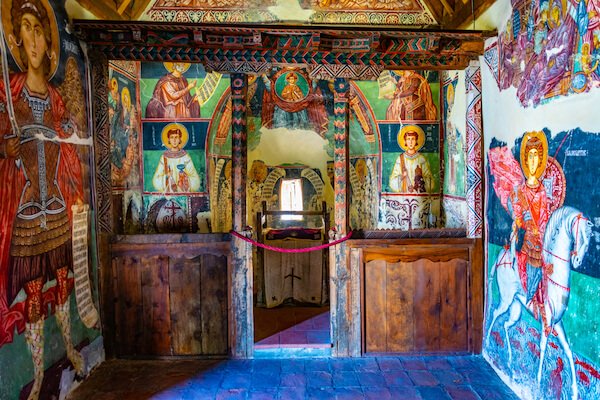 Painted Church in Pedoulas - image by trabantos/shutterstock.com
Painted Church in Pedoulas - image by trabantos/shutterstock.comAmong the most well known monuments, landmarks and attractions of Cyprus are the Tombs of the Kings, the ruins of Kourion, the mosaics of Paphos and Aphrodite's Rock.
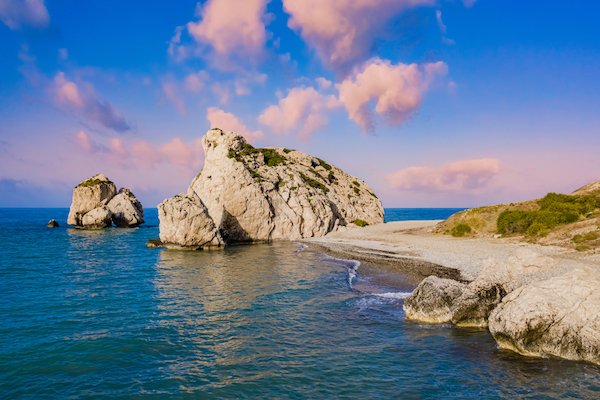 Aphrodite's rock
Aphrodite's rock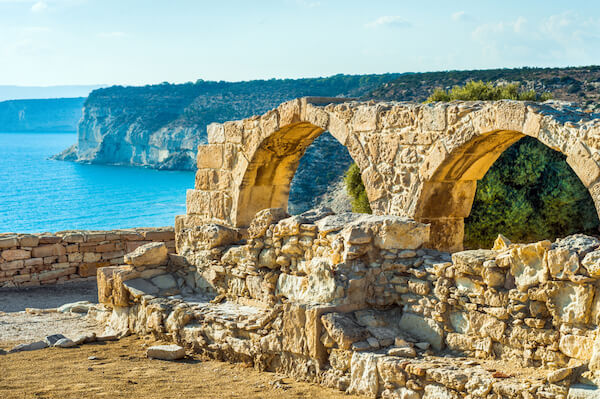 Ruins of Kourion
Ruins of Kourion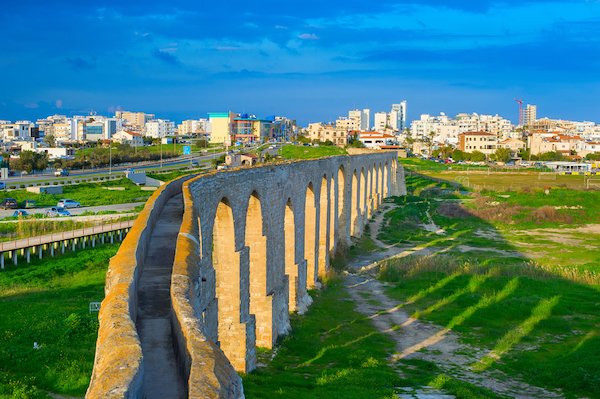 Kanares Aqueduct
Kanares AqueductThere are many famous sandy and rocky beaches in Cyprus as well as fabulous rockpools such as at Coral Bay or Konnos Bay in Ayia Napia that we show on this page.
Then there are also over 70 'Blue Flag' beaches in Cyprus. 'Blue flag' means these beaches are rated amongst the best of the country with clear safe waters and good facilities as well as lifeguards. Amongst these fabulous Cyprus' Blue Flag beaches are the long stretch of golden sand of Pissouri beach, the beach resort of Santa Barbara where many love to go snorkelling, and the natural Agia Thekla beach.
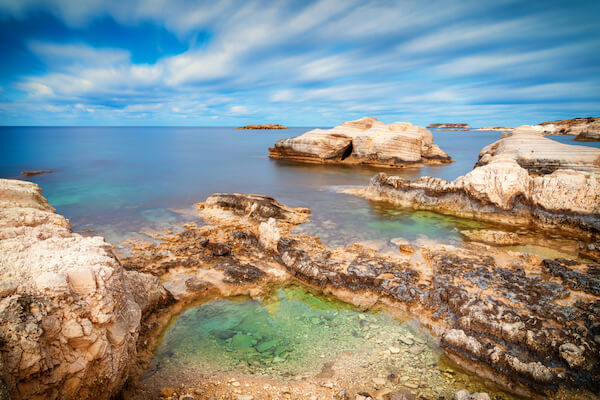 Coral Bay
Coral Bay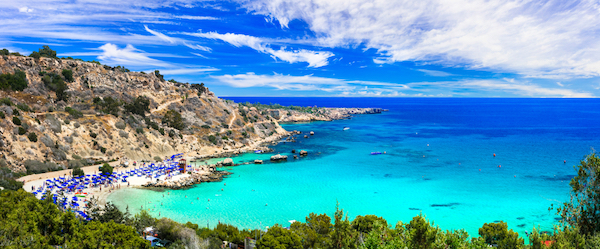 Konnos Bay Beach
Konnos Bay BeachThen there is the fabulous art trail with 16 sculpture along the Limassol promenade.
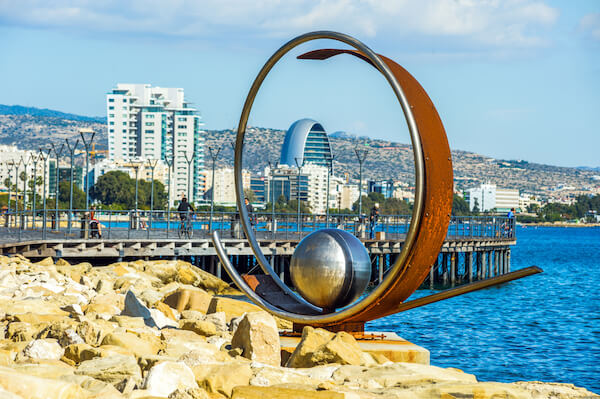
Of course, here are some impressions of Nicosia, the divided capital city and Northern Cyprus.
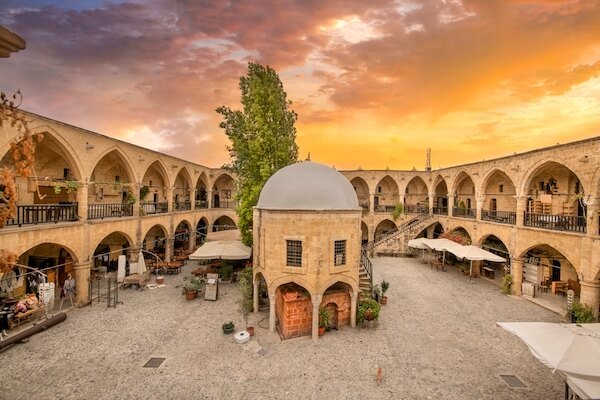 "Great Inn" Ottoman building in Nicosia
"Great Inn" Ottoman building in Nicosia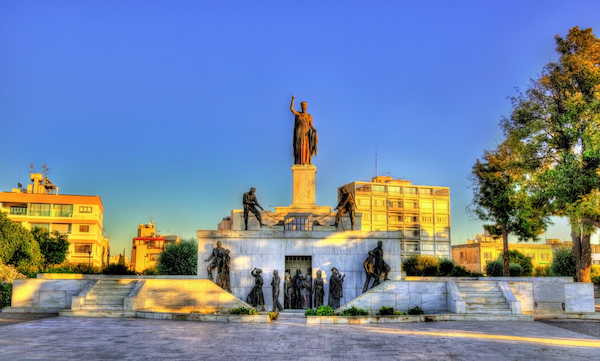 Liberty monument in Nikosia/Lefkosia
Liberty monument in Nikosia/Lefkosia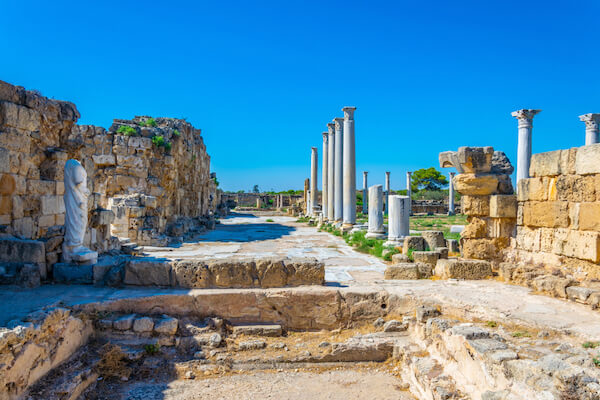 Roman ruins at Salamis in Northern Cyprus
Roman ruins at Salamis in Northern Cyprus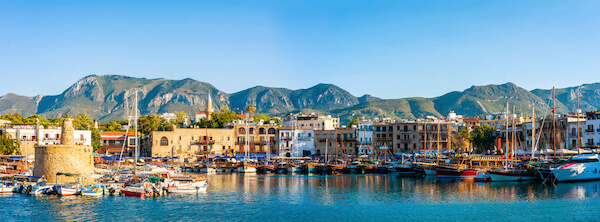 Kyrenia harbour in Northern Cyprus
Kyrenia harbour in Northern Cyprus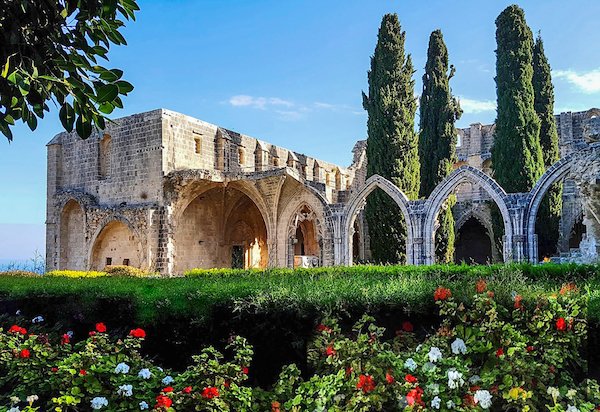 Bellapais Abbey in Northern Cyprus
Bellapais Abbey in Northern CyprusCyprus Facts for Kids | Cypriots
Most of the population of Cyprus live in the capital city Nicosia and in and around the major cities on the island's southern regions. The majority of Cypriots (67%) live in cities and larger towns.
About 70% of the country's in habitants are Greek Cypriots, while 30% are Turkish Cypriots.
The Greek Cypriots are usually also Orthodox Christians while the Turkish Cypriots are Sunni Muslims.
The Cypriots celebrate various festivals, the Limassol Carnival, the Ayia Napia Medieval Festival and Greek Orthodox Easter celebrations are the country's biggest and most popular festivities and events.
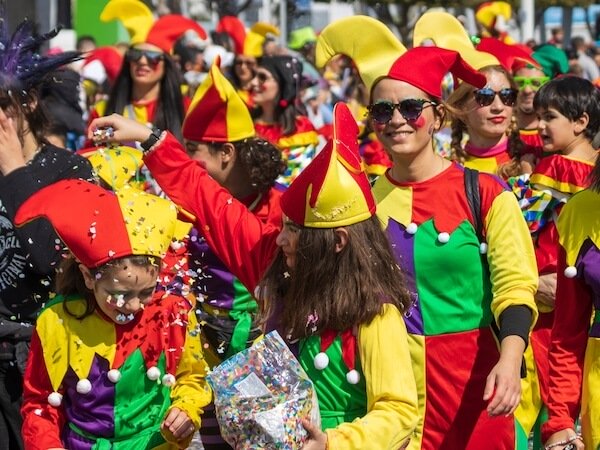 Carnival celebrations in March
Carnival celebrations in MarchIn Cyprus, children go to primary or elementary school from age five. Public school education is free of charge. Schooling is compulsory until Grade 9 or the age of 15. Cypriot pupils learn Greek at school, while English is usually taught early on, from grade one. Most lessons are taught in the mornings, starting at 7h45 and lasting until about 13h00. English is the first foreign language for the pupils while French is offered in many high schools as a second foreign language.
Soccer or football is the most popular sport in Cyprus but many people also volleyball, basketball or cricket.
Cyprus Facts for Kids | Food in Cyprus
The Cypriot cuisine is full of fresh fish and seafood, citrus fruit and vegetables. Spices used in the Mediterranean cuisine such as thyme, oregano or rosemary are added to most Cypriot dishes while dill and mint are also very popular spices.
Many dishes are a blend of the Greek, Turkish and Middle Eastern cuisines.
Meze are small dishes that are served as starters and include usually halloumi, olives, breadsticks, various dips, freshly caught seafood such as octopus and stuffed vegetables.
Popular food in Cyprus:
- Halloumi: white cheese usually fried golden and crispy and served with salads and breads
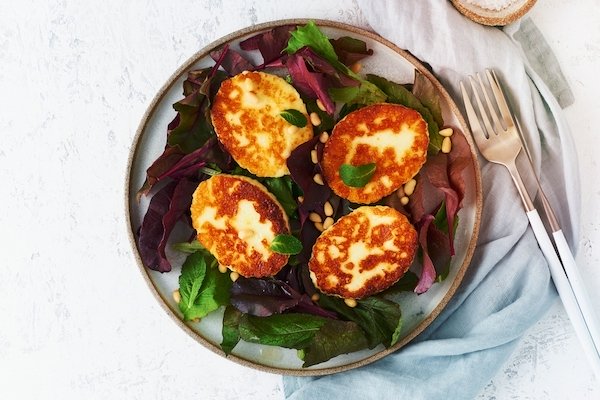 Fried halloumi cheese
Fried halloumi cheese- Souvlaki: skewers of marinated meat kebabs, mostly chicken and lamb
- Taramosalata: pink coloured dip made with fish roe, lemon, mashed potatoes as well as onions and of course olive oil
- Koupepia: vine leaves stuffed with tomatoes and minced pork
- Daktyla: so-called ladies fingers are delicious sweet treats similar to baked pancakes with almond filling
- Kafes Peksemet: bread sticks with onion seeds and sesame that are baked in form of a grid or gate
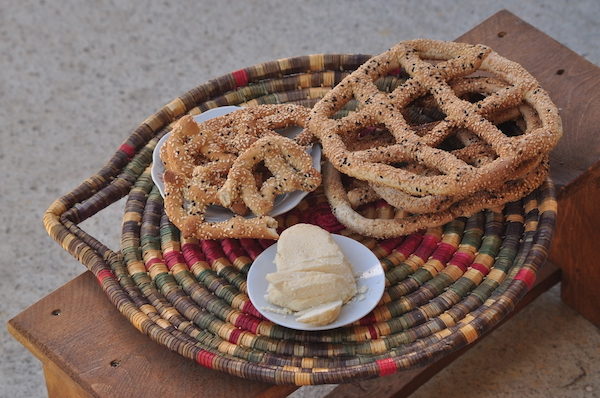 Kafes Peksemet
Kafes PeksemetCyprus Facts for Kids | Economy
Cyprus is part of the European Union since 2004 and since 2008, the euro is the currency of Cyprus.
Cyprus has large deposits of copper and coal and is a major producer of lithium. The name "Cyprus" originates from the Greek word 'kupros' which means copper. Grapes, olives, citrus fruits as well as potatoes and wheat are the main crops in Cyprus.
The main trading partners are Greece, Italy, India, Libya, Turkiye and the United Kingdom.
Cyprus Facts for Kids
Animals in Cyprus
Cyprus is home to the mouflon, a wild sheep, that lives in the mountains and forests around Pafos/ Paphos. Mouflons are the largest wild species and are a protected species. They have a redish brown coat and horns. The mouflon is the national animal of Cyprus.
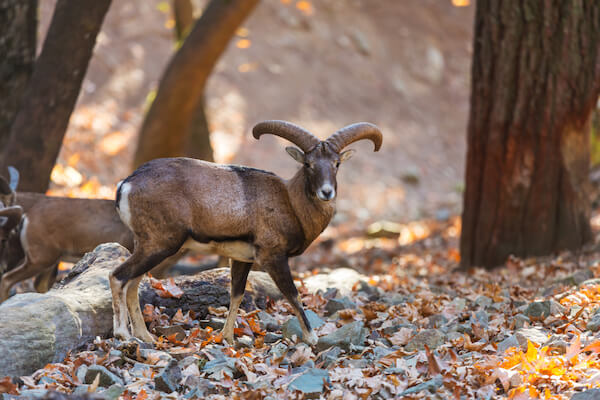 Mouflon
Mouflon21 mammal species and 380 bird species live on the island. Most of the birds here are migratory birds that fly from Europe to Africa for the colder winter months. Amongst these migratory birds are flamingoes and imperial eagles as well as the Cyprus warbler that is a songbird that is native to the island.
Cyprus is also a nesting place for loggerhead turtles and green turtles, both are endangered species.
Popular Pages
Useful Resources for Cyprus Facts for Kids
- Central Intelligence Agency. "Cyprus". CIA World Fact Book. Last updated 23 April 2025. Last accessed 30 April 2025
- Cyprus Tourism. "Gastronomy". VisitCyprus. Last accessed 30 April 2025
- UNESCO. "Paphos". whc.unesco.org. Last accessed 30 April 2025
- Northern Cyprus Tourism. "Famagusta" Northern Cyprus. Last accessed 30 April 2025
- Art Trail Project. "Limassol Promenade Sculpture and Art Trail." ArtTrail. Last updated 20 January 2023. Last accessed 30 April 2025.
This Cyprus facts for Kids page was added on 23 June 2023 and last updated on 30 April 2025.
Image Credits on Cyprus Facts for Kids page: Shutterstock.com and wikipedia commons
Return from Cyprus Facts for Kids to Kids-World-Travel-Guide Homepage
More about Countries in Europe
 Kyrenia harbour in Northern Cyprus
Kyrenia harbour in Northern Cyprus